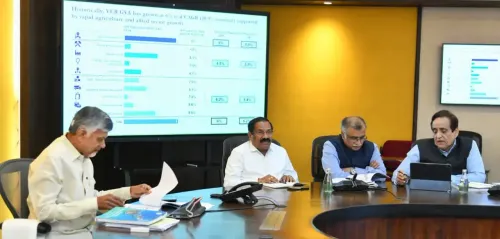World Bank: India Must Achieve 7.8% Growth for High-Income Status by 2047

Synopsis
Key Takeaways
- India needs 7.8% average growth for high-income status.
- Historical growth averages 6.3% from 2000 to 2024.
- Investment must rise to 40% of GDP by 2035.
- Labor force participation should increase to 65%.
- Focus on human capital and female participation is crucial.
New Delhi, Feb 28 (NationPress) A recent report from the World Bank highlights that India must achieve an average growth rate of 7.8% over the next 22 years to fulfill its goal of attaining high-income status by 2047—a target deemed feasible.
The 'India Country Economic Memorandum,' titled ‘Becoming a High-Income Economy in a Generation,’ asserts that this ambition is within reach.
With India’s rapid growth averaging 6.3% between 2000 and 2024, the report indicates that historical achievements lay the groundwork for future goals. However, reaching this milestone will necessitate ambitious reforms and their effective execution.
“Experiences from nations like Chile, Korea, and Poland demonstrate successful transitions from middle- to high-income economies through enhanced global economic integration,” stated Auguste Tano Kouame, World Bank Country Director.
“India can forge its own path by accelerating reforms and leveraging its past successes,” Kouame added.
The report assesses three growth scenarios for India over the next 22 years.
To attain high-income status within a generation, India must achieve faster and more inclusive growth across its states; elevate total investment from the current 33.5% of GDP to 40% (real terms) by 2035; boost overall labor force participation from 56.4% to over 65%; and enhance overall productivity growth.
“By investing in human capital, India can capitalize on its demographic dividend, create favorable conditions for quality job opportunities, and increase female labor force participation from 35.6% to 50% by 2047,” noted Emilia Skrok and Rangeet Ghosh, co-authors of the report.
India has raised its average growth rate to 7.2% over the last three fiscal years.
To sustain this momentum and achieve an average growth rate of 7.8% (in real terms) over the next two decades, the Country Economic Memorandum suggests four key policy actions: increasing investment, fostering an environment for more and better jobs, promoting structural transformation, enhancing trade participation and technology adoption, and enabling states to grow more rapidly and cohesively.









